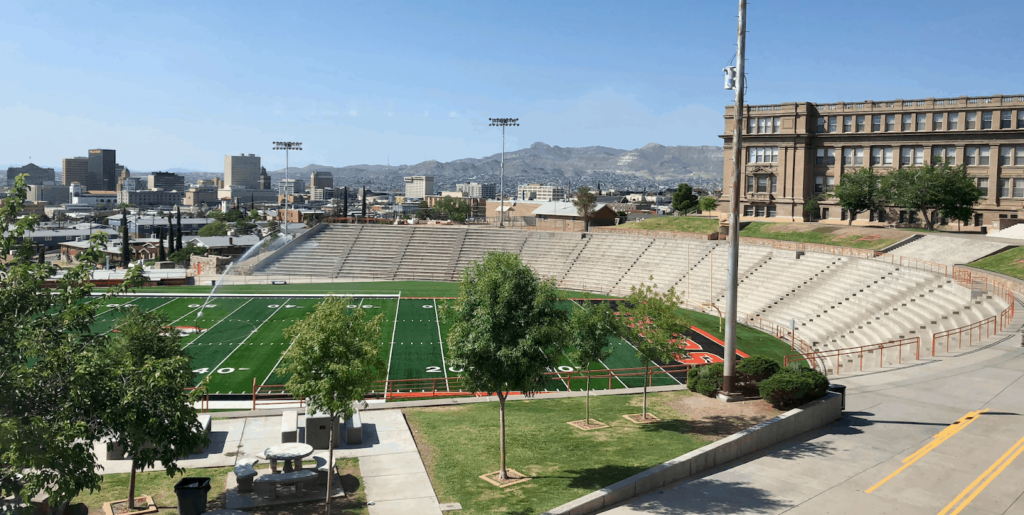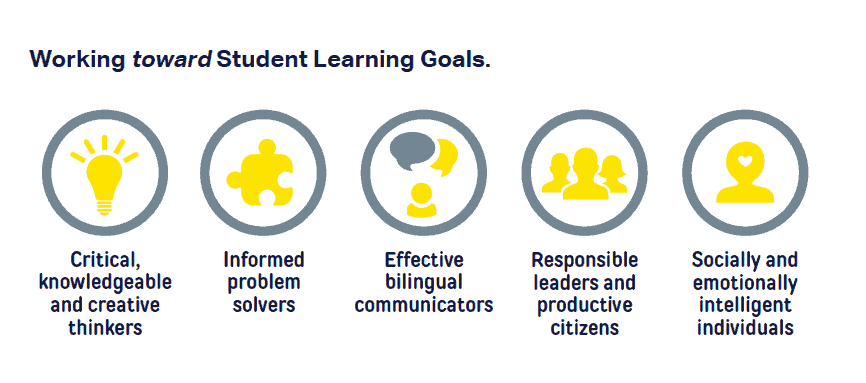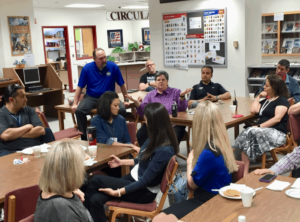From Test Prep To Active Learning: The El Paso Transformation

Imagine the intensity of a Syracuse full court press, the efficiency of Navy SEALs, the agility of a Silicon Valley startup, and the compassion and responsiveness of the Red Cross.
As I interviewed the leadership of the El Paso Independent School District over the last two weeks it didn’t feel or sound like most school districts. The remarkable level of talent, the mission alignment, the “whatever it takes for every student” mentality was striking.
When the pandemic struck in March, superintendent Juan Cabrera told his team, “From today forward, we are half education, half social services–whatever these kids need you have my permission to put that hat on—be completely responsive to their needs.” The speed and quality of response to the pandemic meant that education shifted smoothly to remote learning and new meal delivery protocols were quickly implemented.
A year ago, within minutes of the Walmart shooting in El Paso, the EPISD team sprang into action and created a family reunification center at a middle school near the scene. For 72 hours, the middle school served as a hub for federal, state and local agencies to support family members searching for victims. Cabrera asked EPISD staff on location to support any and all requests from agencies. EPISD’s staff provided grief counseling in partnership with local health providers.
Local agencies know they can turn to EPISD to help in local problem solving and for their help in effective dissemination of information. It’a a place that focuses on children and families and responds quickly and efficiently to their needs. But it wasn’t always that way.
Unusual Spark in an Unlikely Place
Sprawling around the southern end of the 7,000 foot tall Franklin Mountains and just north of the Rio Grande and Juarez, Mexico is El Paso, Texas. It’s four hours south of Albuquerque and the only part of Texas in the Mountain Time Zone. It’s closer to San Diego than Houston. The three million people in the border region make up the largest bilingual, binational workforce in the hemisphere.
One might not expect to find America’s best education transformation story in this unusual place. Making it even more unlikely is that just seven years ago the El Paso Independent School District (EPISD) was focused on test preparation and was mired in a cheating and embezzlement scandal. In 2012, the superintendent was arrested and jailed and subsequently EPISD became the largest Texas district to fall under state control. The state took over the district and appointed a board of managers led by now mayor Dee Margo. In 2013, the board of managers appointed a bilingual teacher turned lawyer, Juan Cabrera superintendent.
After three years of teaching, Cabrera earned his law degree, practiced law in Texas and then spent five years leading corporate software teams in Latin America, Asia and Europe (and picking up a few new languages along the way). Cabrera returned home to Texas and built a statewide school-law practice supporting school districts. He knew district policy and politics–and knew that capable leadership sustained over time could change the trajectory of a school district and a city.
Growing up in a bilingual household in a Texas border town, watching his dad support workers and families in California migrant camps, and then cutting software deals in 17 languages gave Cabrera strong instincts for the value of the interpersonal skills embedded in a whole child and dual language approach to learning.
During the fall of 2013, Cabrera visited more than 90 schools and hosted evening town halls to discuss the future of El Paso’s largest employer. Along with his staff, he met with parents, business partners and staff members who asked for a broader set of learning goals focused on critical thinking and authentic problem solving and incorporating social and emotional learning and citizenship, rather than test-prep focus that had dominated El Paso for a decade (summarized below).

A rapidly developed plan set four priorities: active learning, great community schools, community partnerships, and leading with ethics and character. A completely new leadership team with the support of a few capable partners set to work.
Seven years later, and back under the leadership of a locally elected board, progress in the urban school district that serves more than 55,000 students has been impressive across the board with improvement on basic measures of achievement, college and career readiness, deeper learning, graduation rates and enrollment into meaningful postsecondary options. In 2018 and 2019, EPISD received the highest ranking of any urban Texas district with a majority of economically disadvantaged students.
El Paso achieved this academic success without focusing on test prep, in fact, Cabrera may be one of the only superintendents in America that did not discuss state accountability in his first five years. It was all about “kids first”, active learning, and community.
The district has become a trusted partner locally and a nationally recognized innovator. It is a more attractive place to work with 20% better salaries and positive culture. Passing a $669 million bond in 2016 doubled the number of learners who are or soon will be in modern facilities.
10 Building Blocks of the Transformation
After interviewing the board and leadership team in June, we identified 10 elements that contributed to the transformation of El Paso schools.
1. Great leadership: Cabrera assembled an extraordinary (majority female) leadership team that looks like El Paso and is committed, cohesive, and collaborative. Most of the 85 school principals were hired in the last seven years and are committed to the active learning and SEL agenda. “During my first 5 years, I spent the majority of my time identifying leaders with passion, agility, intelligence and a relentless desire to drive equity and support students” explained Cabrera.
2. Strong culture: The culture is student-centered, growth-focused, community-connected, agile and entrepreneurial. Many staff members proudly wear a badge declaring, “I am EPISD” that speaks to a shared and individual commitment to improvement and quality.
3. Whole child. Cabrera shifted the focus from narrow measures of success to focusing on the whole child. As their site explains, “This approach seeks to assure EPISD graduates are academically prepared, well-rounded, civic-minded young citizens.”
“We chose to partner with CASEL (Collaborative for Academic, Social, and Emotional Learning) and other districts in the Council of the Great City Schools that recognize the importance of social and emotional learning,” explained Cabrera and he added “the shift to whole child has been the foundation of our cultural transformation.”
4. Active learning: The core of the academic strategy is high engagement active learning strategy for ALL students, regardless of their zip code. A partnership with New Tech Network, a national network of 200 project-based schools, jump started the transformation with 10 team-taught, project-based academies that quickly created high quality options and illustrated active learning. They include the only dual-language and STEAM-centered school for young women in the country and the only dual-language New Tech K-12 feeder pattern including Hart Elementary, Guillen Middle School and Bowie High School, all sit within feet of the US-Mexico border (listen to this podcast with the staff).
5. Investing in teachers: a partnership with Engage2Learn brought active learning to life for teachers through high quality professional learning. Active learning instructional coaches in every school support teachers on a daily basis. Significant investments in teacher salaries helped attract and retain great teachers and staff. Teacher investments were prioritized while the district budget and enrollment contracted.
6. Investing in technology: Rather than spending $10 million on quickly out-of-date science textbooks, the district developed a partnership with nonprofit CK-12 to develop open digital resources aligned with Texas standards. They used the savings to provide mobile devices for all learners. EPISD is the largest Apple partner in the U.S. with MacBooks for all grade 6-12 students and iPads for all elementary students. The phases of the PowerUp initiative linked improved technology access with teacher training.
7. Dual language: Starting with one dual language feeder pattern and traditional English language learning programs (i.e, exit to English only) at the other 50 elementary schools, the district, in partnership with UTEP, developed the most robust two way K-8 dual language program in the country resulting in biliterate and bicultural learners. The program is expanding as an option through all high schools over the next few years.
8. Lean operations: A focus on quality and customer services and competent financial management lead to cost savings in district operations that allowed reinvestment in teaching and learning. Highlights include automating back office systems, smarter procurement, and big energy savings.
9. Modernize facilities: El Paso has 45 campuses over 50 years old. After a decade without improvement, many were outdated. In 2015 Cabrera’s team developed a 10-year facilities plan and, in 2016, passed a $669 million bond. Now most students will learn in a modern facility.
10. Community partnerships: During the scandal and state takeover EPISD was inward facing and was not a strong community partner. Consequently this was a priority for Cabrera and now much of EPISD’s success is built on strong community partnerships in physical and mental health, safety, and learning opportunities. Business partners and philanthropies supported new academies. EPISD benefited from and contributed to statewide initiatives in blended learning and good governance.
Pandemic Ready
“It felt like we’ve been getting ready for this pandemic for five years,” said Assistant Superintendent Dr. Carla Gonzales referring to the smooth transition to remote learning at the end of March.
The agile culture, common learning platform, active learning training, open online curriculum, personal devices and broadband infrastructure made the transition to remote learning work pretty well for most learners and teachers.
The dramatic improvement in the district’s academic performance and admirable pandemic response led to Cabrera being named “2020 Superintendent of the Year” for the region.
More broadly, Cabrera engineered the transition from a district with deep governance, cultural and fiscal problems to one of the most innovative and admired urban school districts in the country.
“My proudest accomplishment,” said Cabrera, “is instilling a culture that there are no limits to what we will do to support the community inside and outside the classroom.”
For more see:
- El Paso Schools: How the New Tech Network Partnership Accelerated Progress
- Back to School in El Paso: District and New Tech Expand Partnership
- The Role of Trustees in Shaping, Supporting and Monitoring the Innovation Agenda
- Dual Language Education for Equity & Economic Development
Stay in-the-know with innovations in learning by signing up for the weekly Smart Update.







0 Comments
Leave a Comment
Your email address will not be published. All fields are required.